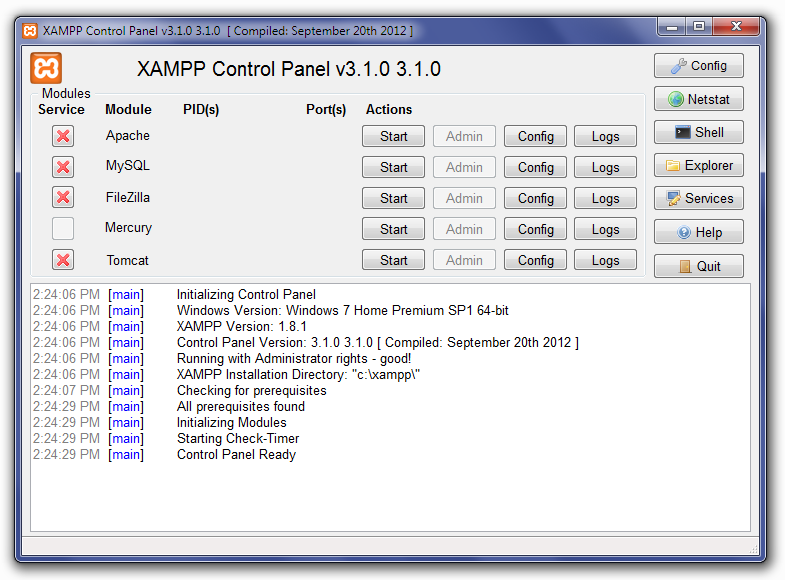

$preparedStatement->execute() Ĭan prepared statements be used for dynamic queries?
XAMPP PHP 5.6 HOW TO
Oh, and since you asked about how to do it for an insert, here's an example (using PDO): $preparedStatement = $db->prepare('INSERT INTO table (column) VALUES (:column)') In the example above, if the $name variable contains 'Sarah' DELETE FROM employees the result would simply be a search for the string "'Sarah' DELETE FROM employees", and you will not end up with an empty table.Īnother benefit of using prepared statements is that if you execute the same statement many times in the same session it will only be parsed and compiled once, giving you some speed gains. So by sending the actual SQL separately from the parameters, you limit the risk of ending up with something you didn't intend.Īny parameters you send when using a prepared statement will just be treated as strings (although the database engine may do some optimization so parameters may end up as numbers too, of course). SQL injection works by tricking the script into including malicious strings when it creates SQL to send to the database. The important thing here is that the parameter values are combined with the compiled statement, not an SQL string. Then when you call execute, the prepared statement is combined with the parameter values you specify. By specifying parameters (either a ? or a named parameter like :name in the example above) you tell the database engine where you want to filter on. The SQL statement you pass to prepare is parsed and compiled by the database server. This makes sure the statement and the values aren't parsed by PHP before sending it to the MySQL server (giving a possible attacker no chance to inject malicious SQL).Īlthough you can set the charset in the options of the constructor, it's important to note that 'older' versions of PHP (before 5.3.6) silently ignored the charset parameter in the DSN. What is mandatory, however, is the first setAttribute() line, which tells PDO to disable emulated prepared statements and use real prepared statements. And it gives the developer the chance to catch any error(s) which are thrown as PDOExceptions. This way the script will not stop with a Fatal Error when something goes wrong. In the above example the error mode isn't strictly necessary, but it is advised to add it. $dbConnection->setAttribute(PDO::ATTR_ERRMODE, PDO::ERRMODE_EXCEPTION) $dbConnection->setAttribute(PDO::ATTR_EMULATE_PREPARES, false) An example of creating a connection using PDO is: $dbConnection = new PDO('mysql:dbname=dbtest host=127.0.0.1 charset=utf8', 'user', 'password') To fix this you have to disable the emulation of prepared statements. Note that when using PDO to access a MySQL database real prepared statements are not used by default. If you're connecting to a database other than MySQL, there is a driver-specific second option that you can refer to (for example, pg_prepare() and pg_execute() for PostgreSQL). $stmt->bind_param('s', $name) // 's' specifies the variable type => 'string' Using MySQLi (for MySQL): $stmt = $dbConnection->prepare('SELECT * FROM employees WHERE name = ?') Using PDO (for any supported database driver): $stmt = $pdo->prepare('SELECT * FROM employees WHERE name = :name') You basically have two options to achieve this:

This way it is impossible for an attacker to inject malicious SQL. These are SQL statements that are sent to and parsed by the database server separately from any parameters. It is possible to create SQL statement with correctly formatted data parts, but if you don't fully understand the details, you should always use prepared statements and parameterized queries. The correct way to avoid SQL injection attacks, no matter which database you use, is to separate the data from SQL, so that data stays data and will never be interpreted as commands by the SQL parser.


 0 kommentar(er)
0 kommentar(er)
